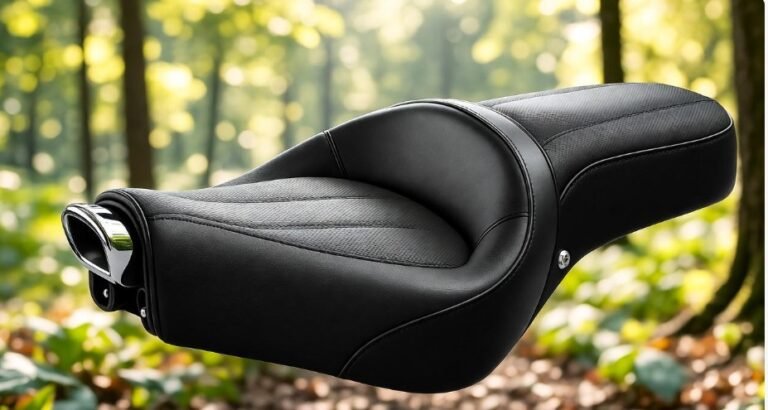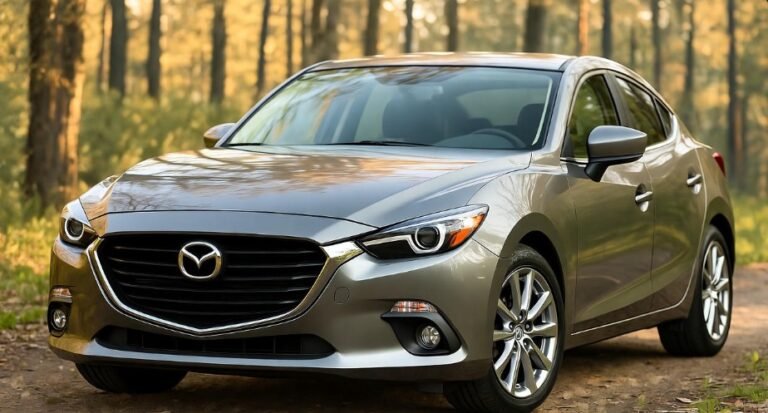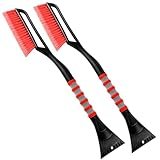Pulsar 150 Disc Brake Caliper Price Guide
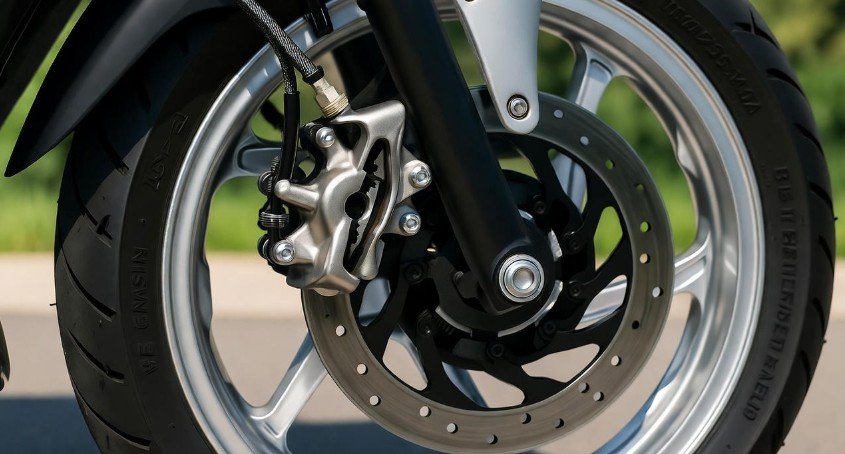
The price for a Pulsar 150 disc brake caliper typically ranges from $20 to $50 for aftermarket parts, while genuine Bajaj parts can cost between $40 and $80. Prices vary based on brand, seller, and location within the USA.
In This Article
- 1 Understanding Your Pulsar 150 Disc Brake Caliper
- 2 Why Brake Caliper Prices Vary
- 3 Pulsar 150 Disc Brake Caliper Price Range in the USA
- 4 Table: Pulsar 150 Disc Brake Caliper Price Comparison
- 5 When Do You Need to Replace a Brake Caliper?
- 6 DIY vs. Professional Installation
- 7 Pro Tip:
- 8 Maintaining Your Pulsar 150 Brake System
- 9 Common Pulsar 150 Disc Brake Caliper Problems & Solutions
- 10 Frequently Asked Questions (FAQs)
- 10.1 Q1: How often should I replace my Pulsar 150 brake caliper?
- 10.2 Q2: Can I use a brake caliper from a different motorcycle model on my Pulsar 150?
- 10.3 Q3: What are the symptoms of a seized brake caliper piston?
- 10.4 Q4: How much does it cost to bleed Pulsar 150 brakes?
- 10.5 Q5: Is it safe to ride with a worn brake caliper?
- 10.6 Q6: Where can I find the best pulsar 150 disc brake caliper price online?
- 11 Conclusion
Key Takeaways
- Find pulsar 150 disc brake caliper price online.
- Compare genuine vs. aftermarket brake caliper costs.
- Factor in installation fees and total repair expenses.
- Identify common symptoms of a failing brake caliper.
- Learn how to maintain your brake system effectively.
Your Pulsar 150’s braking system is crucial for safety. A key component of this system is the disc brake caliper. If you’re experiencing braking issues or planning routine maintenance, knowing the pulsar 150 disc brake caliper price is essential. This guide will break down the costs, explain why they vary, and help you make an informed decision. We’ll make this process simple and reassuring, just like a smooth ride on a well-maintained bike.
Understanding Your Pulsar 150 Disc Brake Caliper
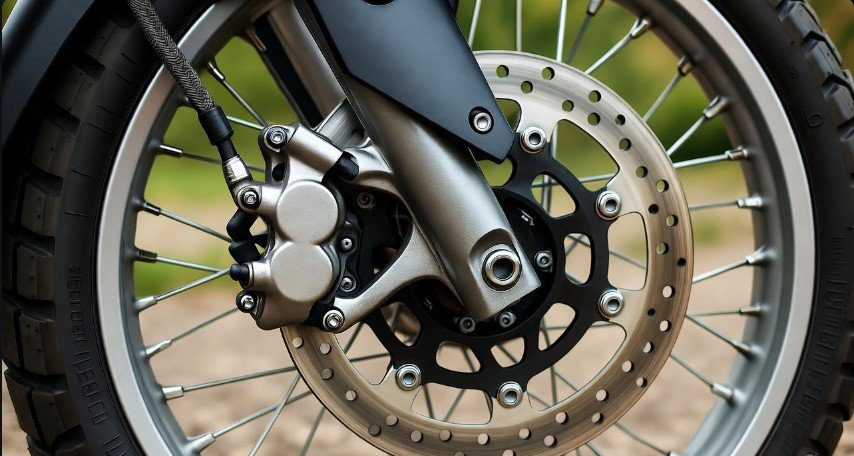
The disc brake caliper on your Bajaj Pulsar 150 is a vital part of your bike’s stopping power. Think of it as the clamp that squeezes the brake pads against the brake disc (rotor) to slow down or stop your motorcycle. When you apply the brake lever, hydraulic fluid pushes pistons within the caliper, forcing the brake pads onto the spinning disc. This friction converts kinetic energy into heat, slowing the wheel.
Your Pulsar 150 likely uses a single or dual-piston caliper system on the front and rear wheels, depending on the specific model year and variant. A properly functioning caliper ensures consistent and reliable braking performance, which is paramount for your safety on the road. Recognizing when this component needs attention can prevent more significant issues and costly repairs down the line.
Why Brake Caliper Prices Vary
Several factors influence the pulsar 150 disc brake caliper price, making it important to shop around. Understanding these variables will help you find the best value without compromising on quality or safety. Here are the main elements that affect cost:
- Brand and Manufacturer: Genuine Bajaj parts are manufactured to specific standards and often come with a higher price tag. Aftermarket brands offer alternatives, with quality and price varying significantly. Some reputable aftermarket manufacturers produce excellent parts, while others may be less reliable.
- Quality and Materials: Higher-quality materials and manufacturing processes generally lead to a higher price. This can translate to better durability, performance, and longevity for the brake caliper.
- Seller and Location: Prices can differ between online retailers, local motorcycle shops, and dealerships. Shipping costs and regional market demands also play a role. For those in the USA, local availability might be more convenient but potentially pricier than online orders from specialized parts suppliers.
- Model Year Specifics: While the Pulsar 150 has remained relatively consistent, minor design changes across model years might require specific caliper versions, subtly affecting pricing.
- New vs. Remanufactured: While most users will look for new parts, remanufactured or reconditioned calipers are sometimes available at a lower cost. It’s crucial to ensure these have been thoroughly tested and come with a warranty.
Pulsar 150 Disc Brake Caliper Price Range in the USA
Navigating the market for a Pulsar 150 disc brake caliper price requires understanding the typical cost brackets. These figures are approximate and can fluctuate based on the factors mentioned above. For clarity, we’ve broken down the pricing by origin:
Genuine Bajaj Parts
When you opt for genuine Bajaj parts, you’re getting components designed specifically for your Pulsar 150. These parts undergo stringent quality control and are engineered to meet Bajaj’s performance standards. They are often the most reliable option, ensuring a perfect fit and optimal function.
- Estimated Price Range: $40 – $80 USD
- Where to Buy: Authorized Bajaj dealerships, official Bajaj parts websites, and some specialized motorcycle parts retailers.
- Pros: Exact fit, guaranteed quality, often come with a warranty, maintain original performance.
- Cons: Typically the most expensive option.
Aftermarket Parts
The aftermarket offers a wide array of brake calipers from various manufacturers. These can be a more budget-friendly choice. It’s crucial to research the reputation of aftermarket brands before purchasing.
- Estimated Price Range: $20 – $50 USD
- Where to Buy: Online marketplaces (Amazon, eBay), independent motorcycle parts stores, performance parts specialists.
- Pros: More affordable, wider selection of brands and potential performance upgrades.
- Cons: Quality can vary greatly, fitment might not be as precise as genuine parts, research is vital to avoid poor quality.
Complete Caliper Assembly vs. Individual Components
Sometimes, you might only need a specific part of the caliper, like a piston or seal kit. However, if the caliper housing is damaged or severely worn, you’ll need a complete assembly. The price will reflect whether you’re buying a full unit or just repair parts.
- Full Caliper Assembly: Falls within the ranges mentioned above.
- Caliper Repair/Seal Kit: Typically $10 – $30 USD. These kits include rubber seals and sometimes pistons, allowing you to rebuild an existing caliper.
Table: Pulsar 150 Disc Brake Caliper Price Comparison
To give you a clearer picture, here’s a comparative table. Remember these are estimates and can change.
| Part Type | Estimated Price Range (USD) | Typical Seller | Key Considerations |
|---|---|---|---|
| Genuine Bajaj Caliper | $40 – $80 | Authorized Dealerships, Official Bajaj Parts Sites | Guaranteed fit, optimal performance, higher cost. |
| Reputable Aftermarket Caliper | $30 – $60 | Online Retailers, Motorcycle Parts Stores | Good balance of price and quality, research brand reputation. |
| Budget Aftermarket Caliper | $20 – $40 | Online Marketplaces, Lesser-Known Stores | Most affordable, quality can be inconsistent, check reviews. |
| Caliper Repair/Seal Kit | $10 – $30 | Online Retailers, Motorcycle Parts Stores | For rebuilding existing calipers, check compatibility. |
When Do You Need to Replace a Brake Caliper?
Recognizing the signs of a failing brake caliper is crucial for your safety. Ignoring these symptoms can lead to compromised braking performance, potential accidents, and more extensive damage to your bike’s braking system. Here are common indicators:
- Brake Warning Light: While often indicating low fluid or worn pads, a persistent light could signal caliper issues.
- Spongy or Soft Brake Lever: If the brake lever feels mushy and requires excessive squeezing to engage, it can indicate air in the brake lines or a caliper piston problem.
- Brake Dragging: If your bike feels sluggish, or you notice a constant slight braking sensation even when not applying the brakes, a caliper might be sticking. This can also lead to rapid brake pad and rotor wear.
- Pulling to One Side: When you brake, if the bike pulls consistently to the left or right, it’s often a sign that the caliper on the opposite side isn’t applying enough pressure due to a faulty piston or clogged brake line.
- Leaking Brake Fluid: Inspect the caliper area for any signs of oily residue or drips. Leaks indicate worn seals within the caliper and necessitate immediate attention.
- Grinding or Squealing Noises: While often associated with worn brake pads, persistent or unusual noises during braking, especially accompanied by reduced stopping power, can point to caliper issues where pads are not applying evenly or are seized.
- Uneven Brake Pad Wear: If one brake pad wears down much faster than the other on the same wheel, it suggests the caliper pistons are not applying force evenly.
DIY vs. Professional Installation
Deciding whether to tackle caliper replacement yourself or hire a professional involves considering your mechanical skills, available tools, and time. Both approaches have pros and cons:
DIY Installation
If you’re comfortable with basic motorcycle maintenance and have the right tools, replacing a brake caliper can be a rewarding DIY project. Here’s a general idea of the process:
- Gather Tools: You’ll need common tools like wrenches, socket sets, a torque wrench, brake fluid (DOT 3 or 4, check your owner’s manual), a brake bleeding kit, and potentially a C-clamp or caliper piston tool.
- Safety First: Ensure your motorcycle is securely supported on a stand.
- Access the Caliper: Remove the wheel if necessary, or at least loosen any bolts securing the caliper.
- Bleed the Brakes: This is a critical step. You’ll need to remove old brake fluid and then bleed the new caliper to ensure no air is trapped in the system. This process can be tricky and requires patience. Refer to online guides or your service manual for detailed instructions on brake bleeding for your Pulsar 150. You can find excellent resources on brake system maintenance from organizations like the National Highway Traffic Safety Administration (NHTSA) at nhtsa.gov.
- Install New Caliper: Mount the new caliper, ensuring proper alignment.
- Torque Bolts: Tighten all bolts to the manufacturer’s specifications using a torque wrench. This is vital for safety.
- Refill and Bleed: Fill the reservoir with fresh brake fluid and bleed the system thoroughly.
- Test Brakes: Carefully test the brakes at slow speeds in a safe area before riding at higher speeds.
Estimated DIY Cost: Cost of the caliper/parts + minimal tool investment (if not already owned).
Professional Installation
If you lack the confidence, tools, or time, taking your Pulsar 150 to a qualified mechanic is the safest bet. They have the expertise and specialized equipment to perform the job correctly and efficiently.
- Pros: Ensured proper installation, time-saving, warranty on labor, peace of mind.
- Cons: Higher overall cost due to labor charges.
Estimated Professional Installation Cost: $75 – $150 USD (labor cost, can vary significantly by shop and location in the USA).
Pro Tip:
Always use the correct type of brake fluid specified in your Pulsar 150 owner’s manual. Using the wrong fluid can damage seals and compromise brake performance, leading to dangerous situations.
Maintaining Your Pulsar 150 Brake System
Preventative maintenance is key to extending the life of your brake caliper and ensuring optimal performance. Beyond simply replacing parts when they fail, regular checks can save you money and hassle.
Regular Inspections
- Brake Fluid Level and Condition: Check the brake fluid reservoir regularly. Low levels can indicate a leak or worn pads. Old, dirty fluid should be flushed and replaced. The U.S. Department of Transportation’s Federal Motor Carrier Safety Administration (FMCSA) emphasizes the importance of proper vehicle maintenance, including brake systems, for safety on public roads. You can find general vehicle safety tips on their website.
- Brake Pads: Visually inspect your brake pads for wear. Most pads have a wear indicator groove. If you can’t see it or the pad material is thin, they need replacement.
- Brake Lines: Look for cracks, leaks, or damage to the rubber or braided steel brake lines.
- Rotor Condition: Check your brake discs for excessive wear, deep grooves, or warping.
Brake Fluid Flush
Brake fluid absorbs moisture over time, which can lower its boiling point and cause corrosion within the braking system. A brake fluid flush is recommended every 1-2 years, or as per your owner’s manual. This process involves removing the old fluid and replacing it with new, clean fluid.
Cleaning the Caliper
Periodically, especially after riding in dusty or wet conditions, you can clean the exterior of the brake caliper with a mild degreaser and water. Ensure you don’t spray excessive amounts of cleaner directly into the piston area, and always rinse thoroughly and allow to dry. This helps prevent corrosion and ensures moving parts aren’t hindered by debris.
Common Pulsar 150 Disc Brake Caliper Problems & Solutions
Here’s a look at issues you might encounter with your Pulsar 150 brake caliper and how to address them.
| Problem | Possible Cause | Solution |
|---|---|---|
| Brake Caliper Sticking / Dragging | Corroded or seized piston, dirt/debris around piston, old brake fluid, warped caliper bracket. | Clean and lubricate piston, rebuild caliper with new seals, replace caliper if severely damaged or corroded, check and straighten bracket. |
| Leaking Brake Fluid | Worn or damaged caliper piston seals, damaged brake line connections, cracked caliper body. | Replace caliper piston seals, tighten or replace brake line fittings, replace the entire caliper if the body is compromised. |
| Spongy Brake Feel | Air in the brake lines, worn caliper seals allowing fluid bypass, low brake fluid level. | Bleed the brake system thoroughly, replace worn caliper seals, top up brake fluid and check for leaks. |
| Uneven Brake Pad Wear | Seized piston on one side, bent caliper bracket, incorrect caliper installation. | Service or replace seized piston, check and straighten caliper bracket, ensure caliper is mounted correctly. |
| Noisy Brakes (Grinding/Squealing) | Worn brake pads, debris between pad and rotor, damaged rotor, seized caliper piston causing uneven pad contact. | Replace brake pads, clean rotor and caliper, replace damaged rotor, service or replace caliper if necessary. |
Frequently Asked Questions (FAQs)
Q1: How often should I replace my Pulsar 150 brake caliper?
A: Brake calipers are typically replaced when they fail due to corrosion, seized pistons, or damage, not on a fixed schedule. Proper maintenance can make them last for many years. However, if you experience any issues like sticking, leaking, or uneven wear, it’s time for inspection and potential replacement.
Q2: Can I use a brake caliper from a different motorcycle model on my Pulsar 150?
A: It’s generally not recommended unless you are absolutely certain of compatibility. Brake calipers are designed for specific mounting points, piston sizes, and brake line connections. Using an incompatible caliper can lead to improper fit, reduced braking performance, and significant safety risks.
Q3: What are the symptoms of a seized brake caliper piston?
A: A seized piston can cause the brake to drag (bike feels sluggish), the brake lever to feel inconsistent, uneven wear on brake pads, and potentially overheating of the brake components. In severe cases, it can lead to complete brake failure.
Q4: How much does it cost to bleed Pulsar 150 brakes?
A: If done as part of a caliper replacement by a professional, the bleeding is usually included in the labor cost. If you’re just having the fluid flushed and the system bled without replacing the caliper, expect to pay between $50 and $100 USD at a mechanic.
Q5: Is it safe to ride with a worn brake caliper?
A: No, it is not safe. A worn or damaged brake caliper significantly compromises your ability to stop safely. This puts you and others on the road at serious risk. If you suspect an issue with your brake caliper, stop riding the motorcycle and have it inspected immediately.
Q6: Where can I find the best pulsar 150 disc brake caliper price online?
A: You can find competitive pulsar 150 disc brake caliper prices on major online retailers like Amazon and eBay, as well as specialized motorcycle parts websites. Always verify the seller’s reputation and read customer reviews before purchasing to ensure you’re getting a quality product.
Conclusion
Understanding the pulsar 150 disc brake caliper price empowers you to make smart maintenance decisions. Whether you opt for genuine Bajaj parts or a reliable aftermarket alternative, prioritizing quality ensures your safety and the performance of your motorcycle. By being aware of the cost factors, recognizing the signs of wear, and committing to regular maintenance, you can keep your Pulsar 150’s braking system in top condition. Remember, a well-maintained brake system is the cornerstone of safe and confident riding.

